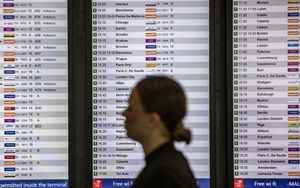(Finance) – Most of the airports Europeans did not increase the tariffs of 2023 and, where they were carried out, the increases were well below theinflationweighing on the profiles of the cash flow. This is what an analysis conducted by Fitch Ratings. There is also a strong uncertainty about tariff revisions in the medium term, which will depend on further changes in the interest rates, inflation, the pace of traffic recovery and future investment needs. The analysis predicts that the 2024 tariff increases for the airports regulated will remain below inflation levels.
“Many regulators airports Europeans kept tariffs stable for 2023 on an annual basis or allowed tariff increases below inflation, while the intense competition it reduced the ability of unregulated airports to raise their fares. While in line with our forecasts, these levels of airport charges will not allow full recovery of the cost increase, weighing on profitability and the flow cash flow at airports,” warns Fitch Ratings.
The analysis found that the organisms regulatory And governmental Europeans have protected the sector from pressures more acute at the peak of pandemic through regulatory frameworks and subsidies, safeguarding the long-term viability of airports. However, in some cases, regulatory changes have reduced short-term rate visibility.
Support helped limit the rating actions negative undertaken by Fitch during the pandemic, the American agency also underlines. “However, the outlook on all but two ratings in our European airport portfolio is negative, reflecting medium-term uncertainties such as the ability to pass rising costs on to customers. Rate increases below inflation will not necessarily affect on ratings as we have already incorporated them into ours projections”, explains the analysis.
Fitch Ratings expects regulated airports to maintain the growth of rates below inflation or unchanged until at least 2024, with rates set in line with the applicable framework for the current regulatory period (e.g. for Aena) or using a provisional pricing mechanism (for ADP, Aeroporti of Rome, Heathrow).
As for the changes tariffs for airports regulated in the medium term the analysis points out that they will depend on several factors, including the forecasts updated on interest rates, inflation and airport investments. However, the reduction in traffic and the reduced use of airport infrastructure can lead to a structural increase in tariffs, especially for essential assets with a monopoly position. Non-regulated airports have more flexibility to set their charges, but are affected by competition for customers. Therefore, most of the unregulated airports have recently raised their prices below inflation. However, their long-term bilateral contracts with airlines improve visibility.
